Last year at Fred Ridley’s annual Wednesday press conference, he announced a partnership with Augusta Technical College, The First Tee of Augusta, and Augusta Municipal Golf Course, locally recognized as The Patch. The announcement detailed how ANGC would assist in the master planning and renovation of the two golf courses–6 holes at First Tee, and 18 holes at Augusta Municipal–and create initiatives to give access to anyone who wants to learn the game of golf.
It was announced today that Tom Fazio and Beau Welling will be the architects in charge of the renovation of these two facilities. The project will begin in January 2025, with a goal of completion by April 2026. This is another example of Augusta National’s commitment to boosting the local golf community in Augusta, Georgia.
This past week I visited The Patch to see the course as currently constituted, as well as what kind of potential the property has to offer for a renovation.
-
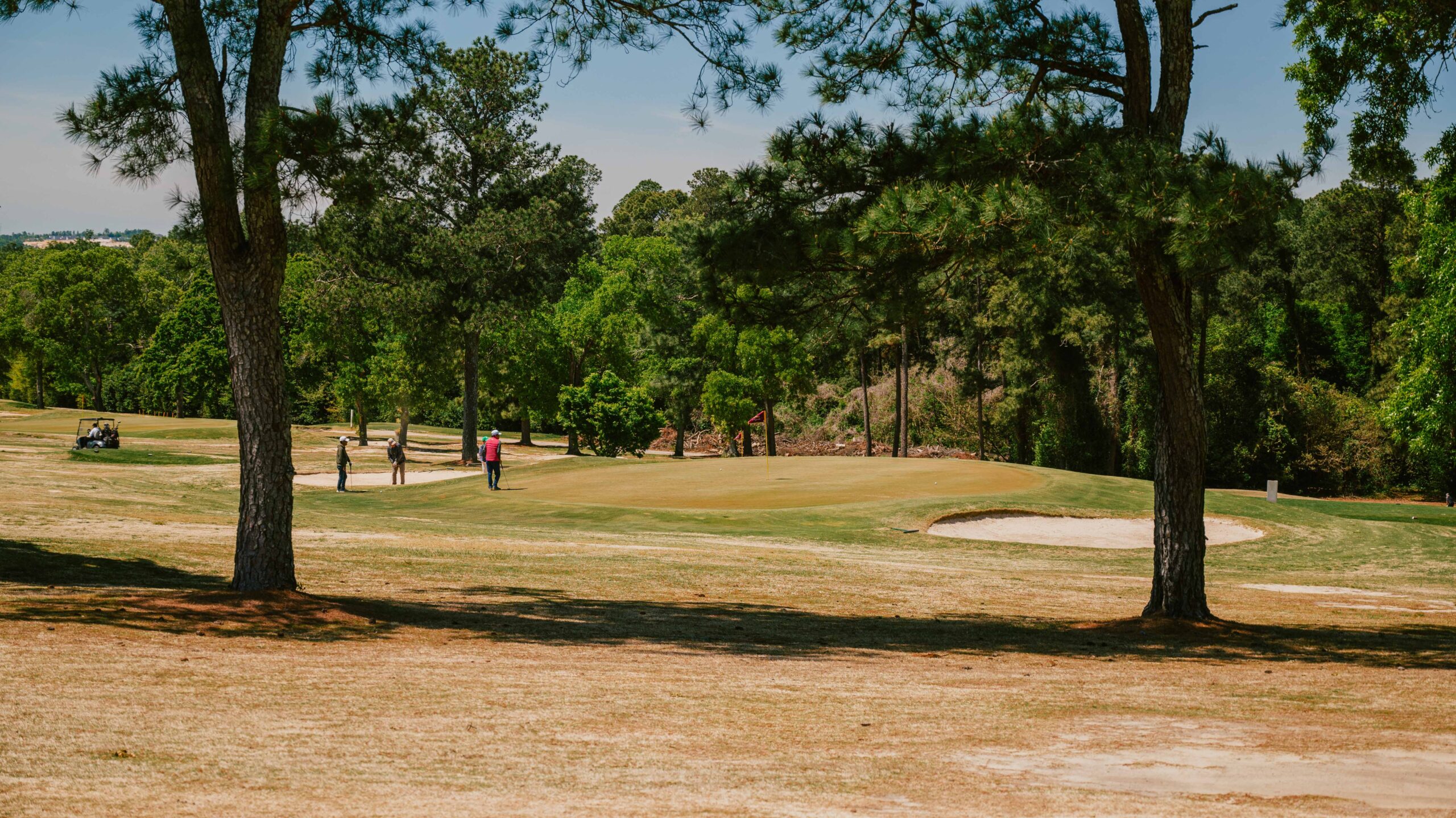
Locals enjoying The Patch
-
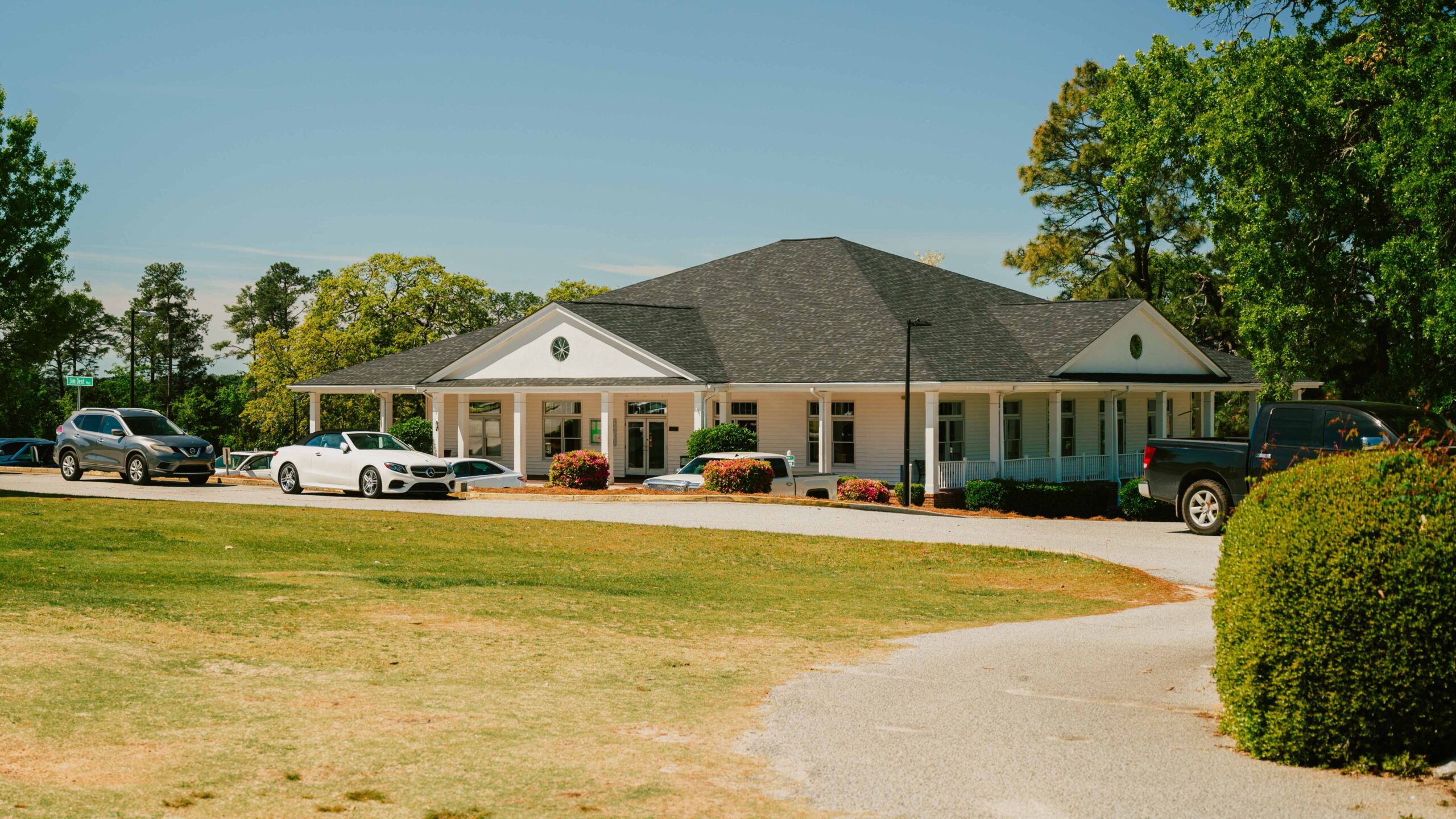
The clubhouse at Augusta Municipal
-
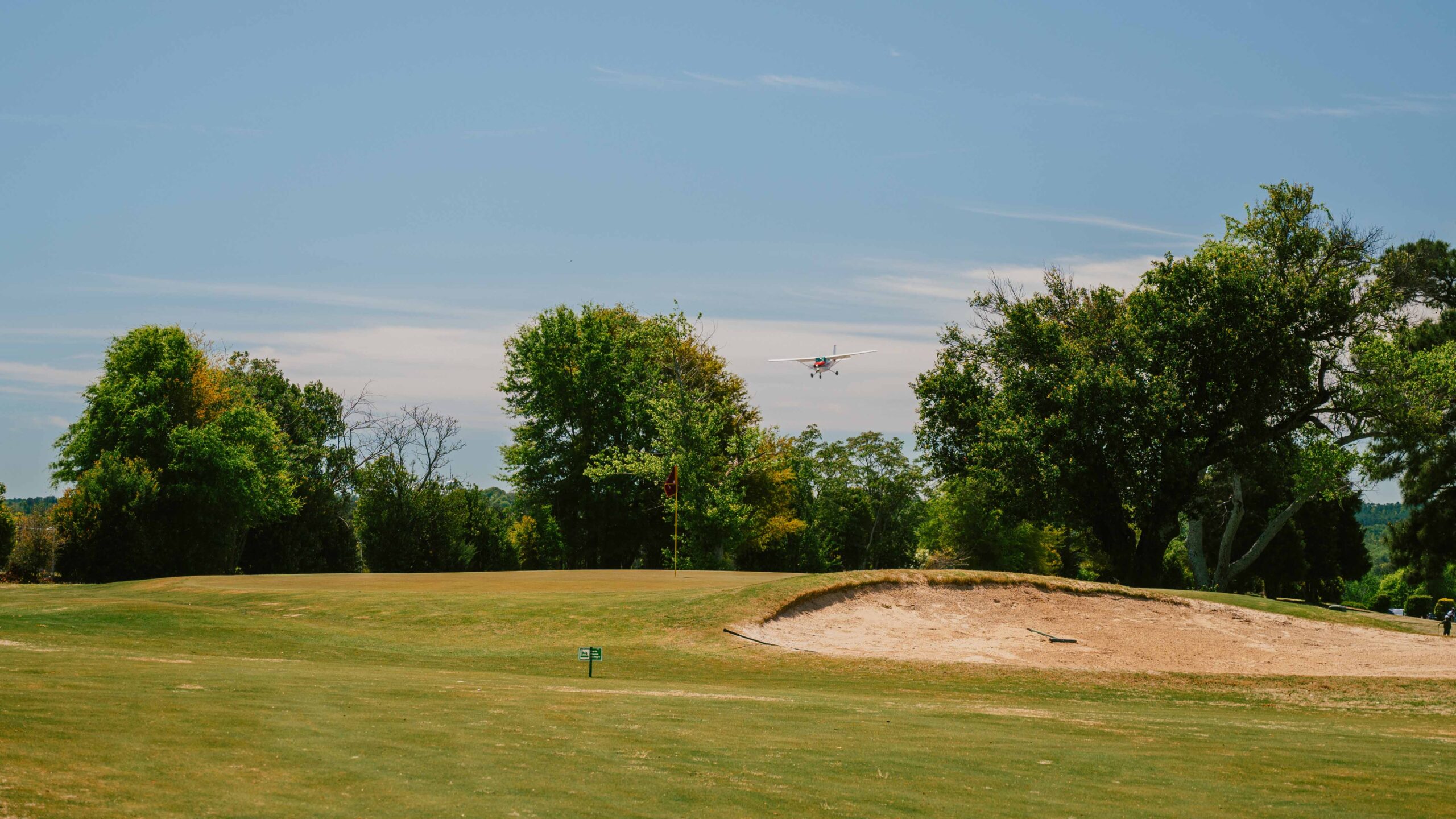
Plane landing adjacent to the eighth green
-
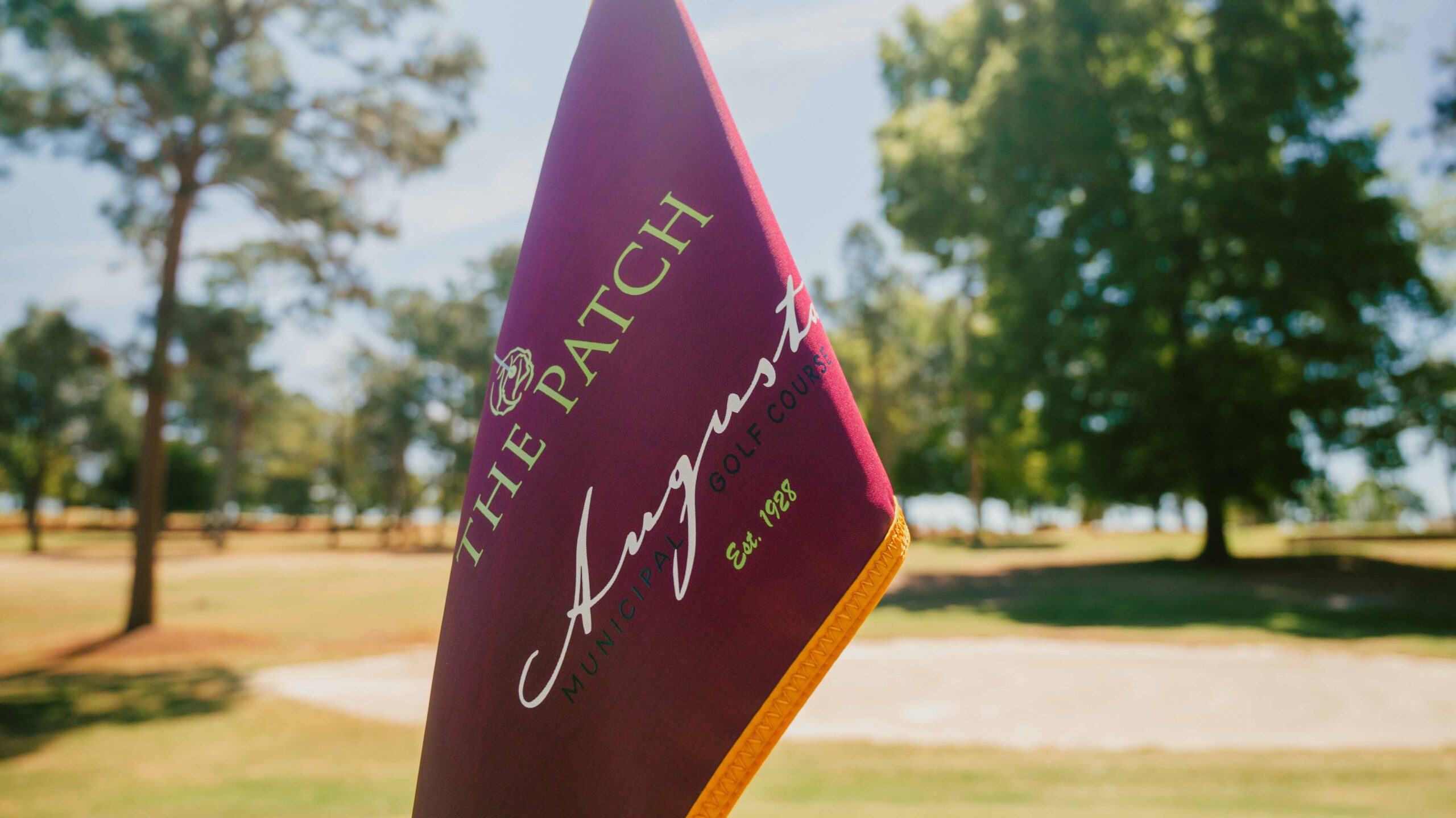
Flag
A diverse group of children, weekend golfers, Masters patrons, and seniors lined the fairways that buzzed with the sound of small prop airplanes taking off and landing at Daniel Field Airport. The V-shaped runway borders most of the golf course, providing a unique backdrop for your round. Most of the course sits along a sloping ridge that tilts down to the northwest side of the property. Holes 3, 4, and 5 play along an opposite-facing slope that forms a valley with the large main ridge. The high side of the course, holes 10-13, cuts around the runway, and is much flatter than the valley-like portion of the property. As you’d expect in Augusta, there’s plenty of interesting land movement; combined with sandy soils, there’s a great opportunity to build a stimulating golf course.
-
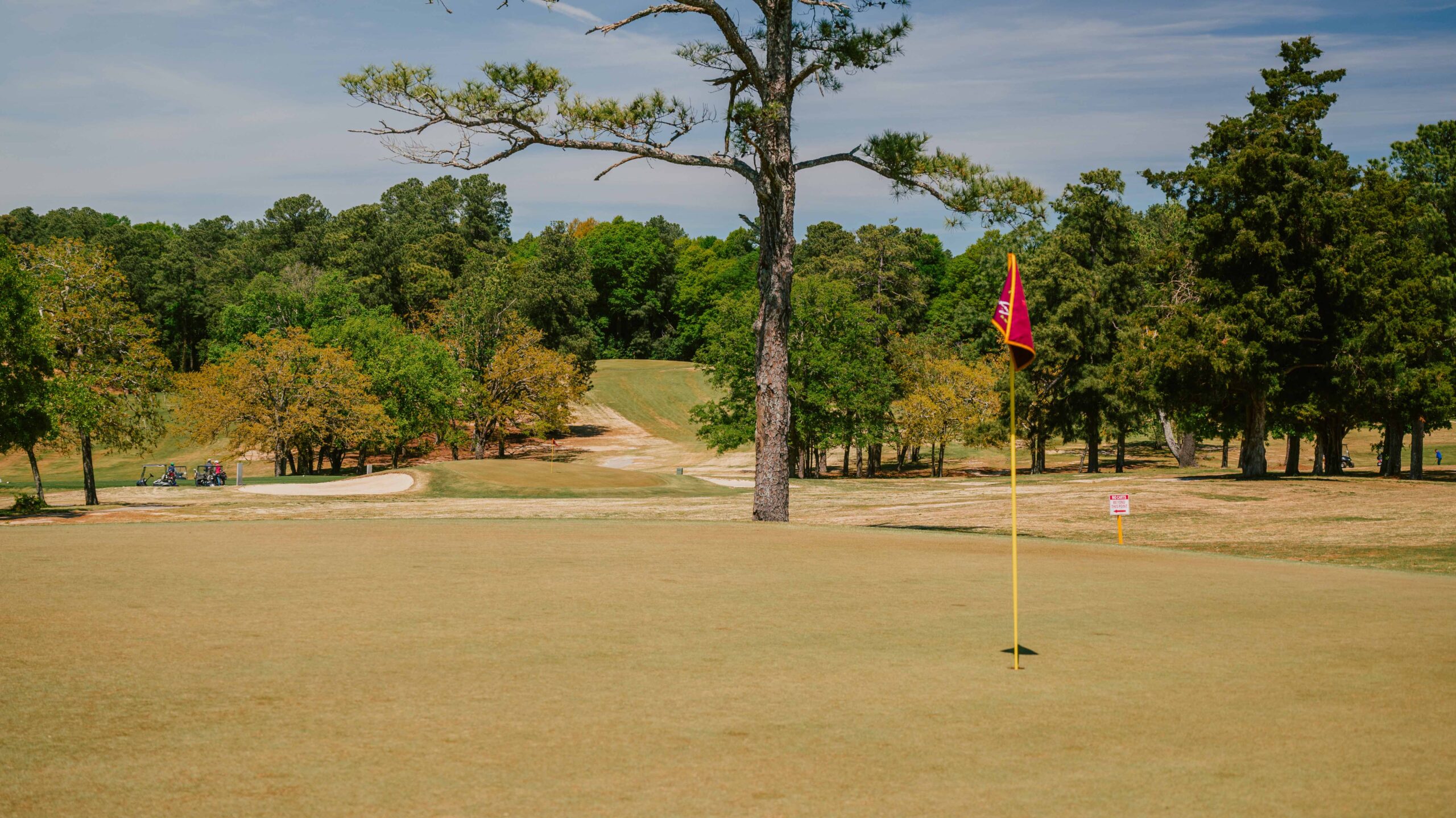
View of the rolling land from the sixth green
-
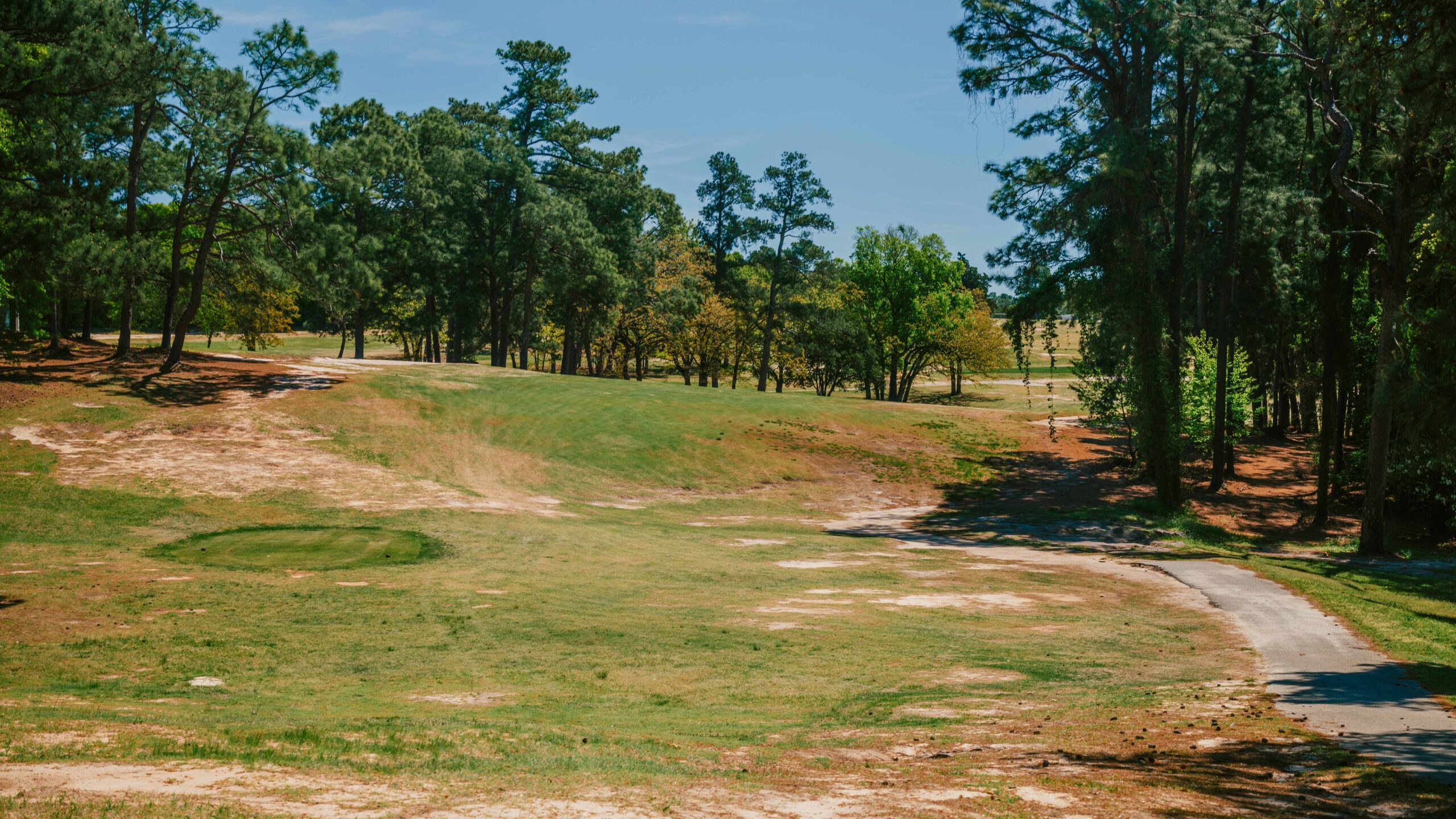
The fourth hole occupies the most interesting land on property
-

Daniel Field Airport boarders several holes
-
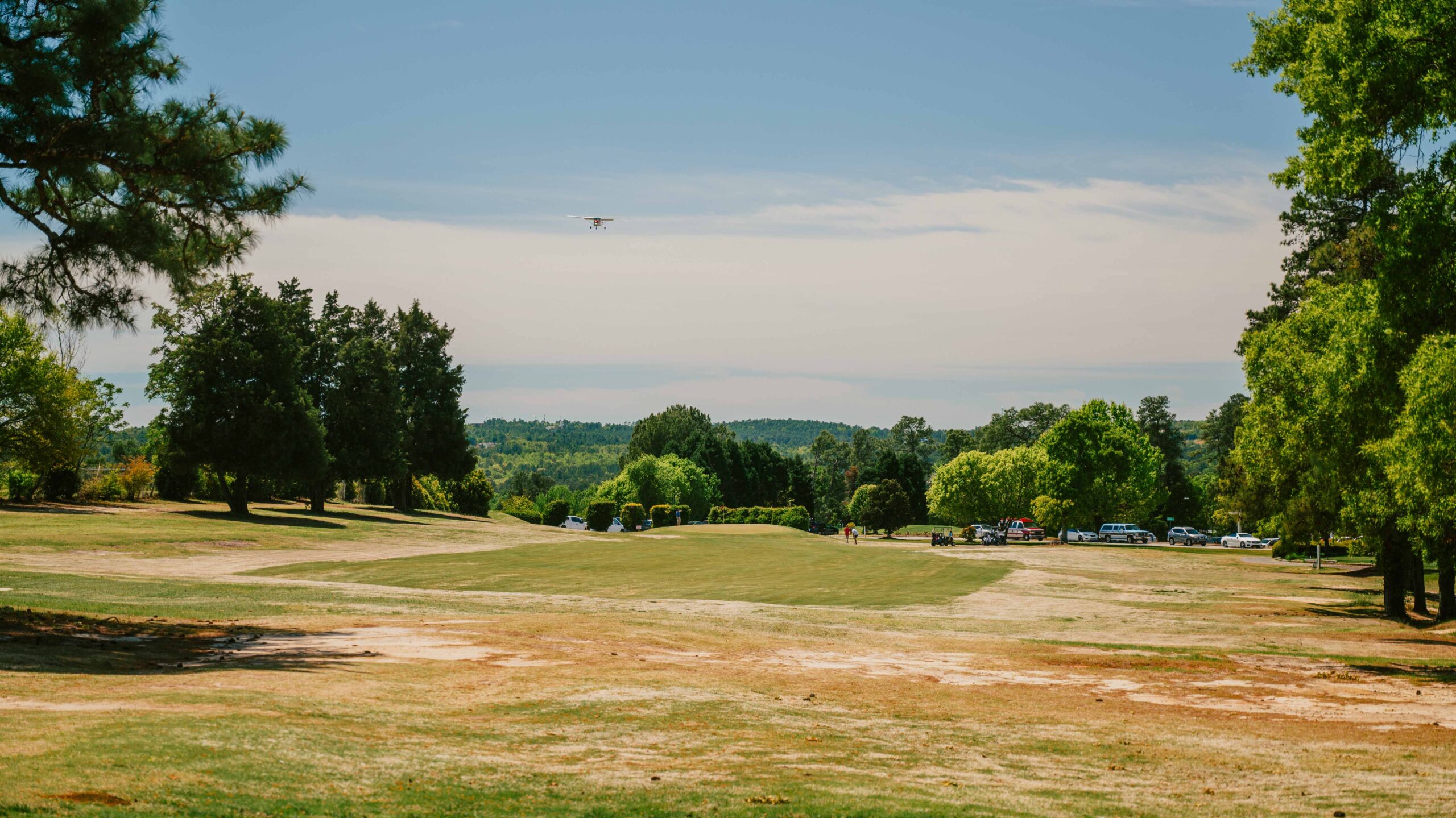
Plane landing adjacent to the ninth hole
Currently, the greens are tiny, tilted severely, and quite firm, like the rest of the playing surfaces. Sandy grassless patches litter the property. Some of the bunkers are even indistinguishable from the exposed surrounding ground. The course needs some love, no doubt, but the bones to produce a terrific golf course are there. Creating an inclusive design that allows for anyone and everyone to enjoy the game is key to success. For me that means a simple yet stimulating design, one that’s easy to maintain and able to handle loads of play.
-
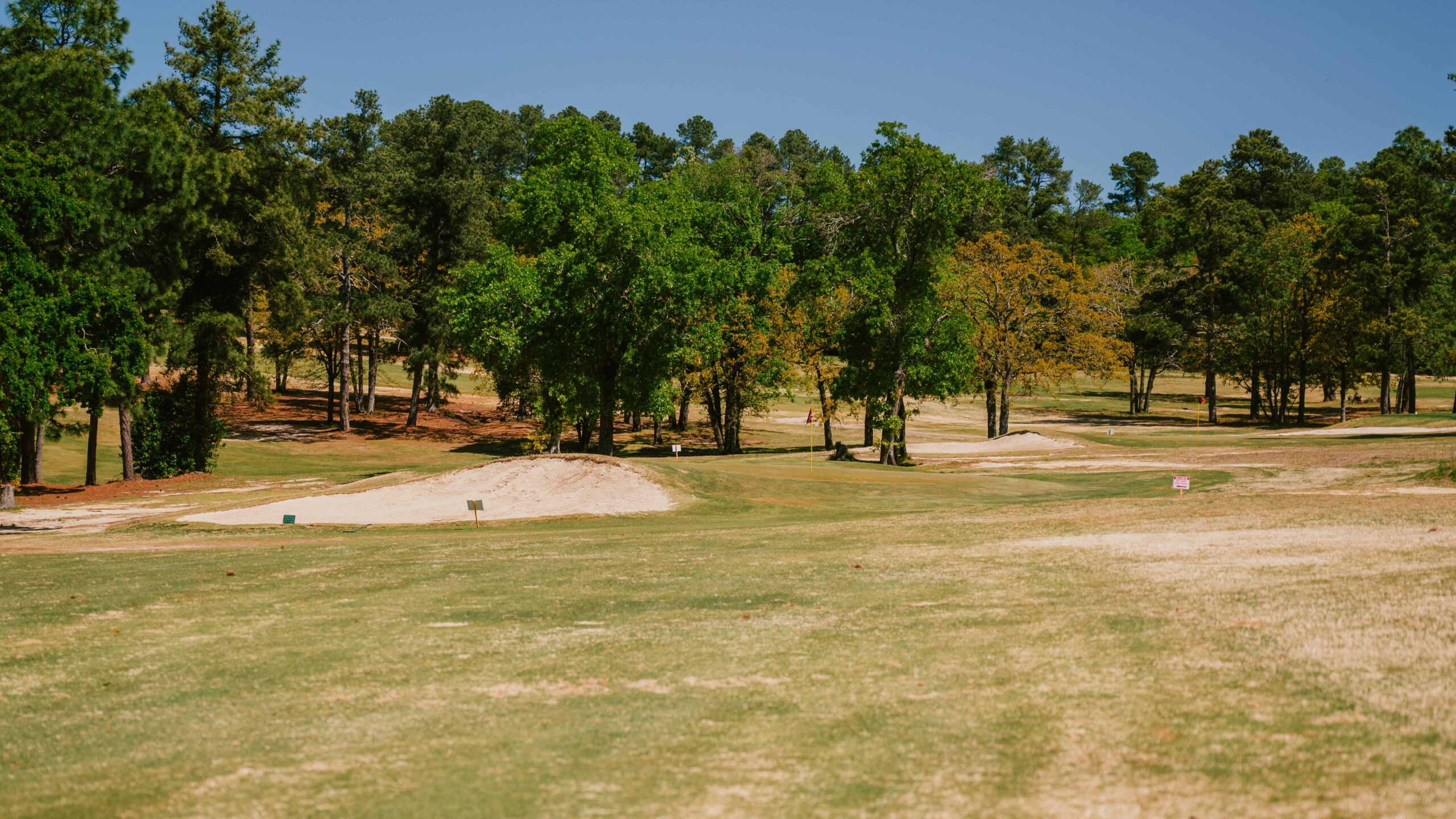
The tiny first green
-
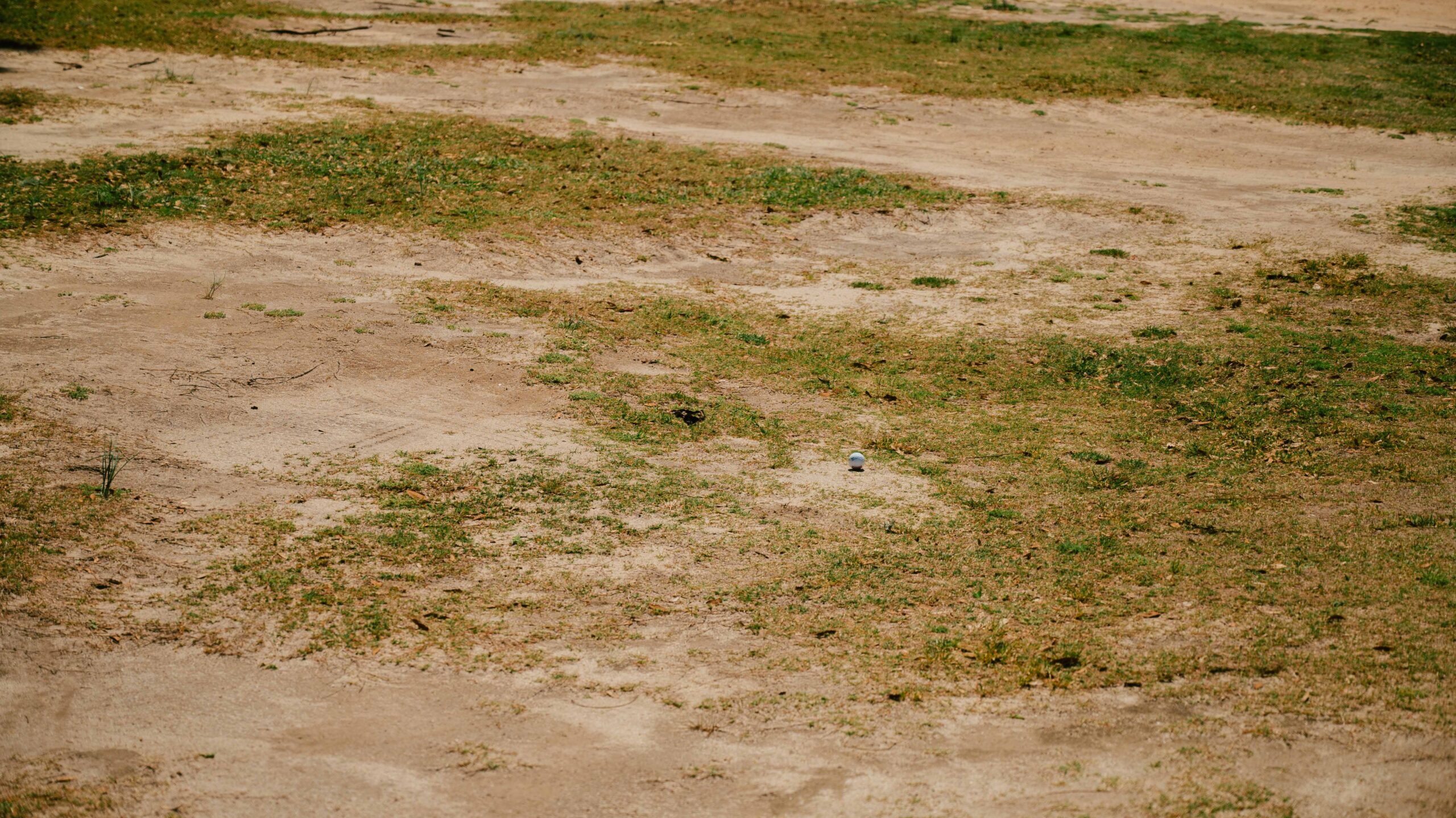
Patchy grass across the course
-
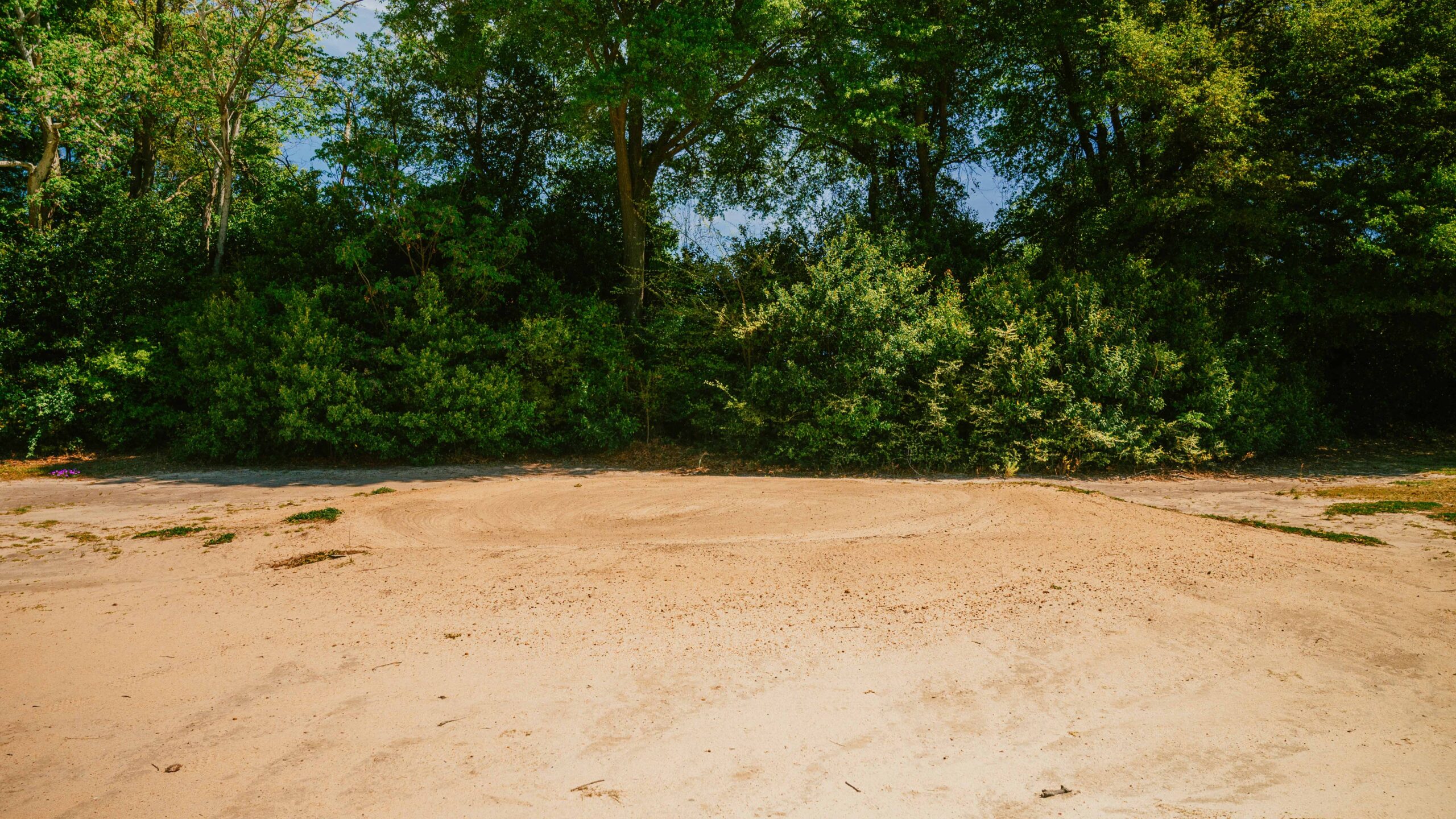
Bunker blends into exposed sandy soil
Like many golf courses across the US, it would be easy to infer that the maintenance staff lacks budget and labor. Designing the new course to optimize maintenance efficiency and inclusivity will allow the property to maintain longevity while making sure players keep coming back.
What does that look like in practice? After visiting, here’s a list of what I’d want to see included in the upcoming renovation:
- Expansion of greens with large open fronts
- 25 or fewer bunkers
- Removal of dead, dying, or problematic trees and dense underbrush
- Re-routing solution for holes 10-14
- Thoughtful teeing locations
- Naturalization of off fairway areas
Larger greens with multiple pin locations will allow traffic to be dispersed more evenly over the surface, resulting in healthier turf. Opening up some approaches and removing bunkers that front greens will allow all golfers of all skill levels the option to run balls into the green. Utilizing sparse, strategically placed bunkers will reduce maintenance costs and labor needs. Tree removal will aid in quality turf conditions throughout the course via increased sunlight and airflow. The beginning part of the back nine has several awkward routing points, hampering the flow of a round and slowing pace of play. At this section of the course, groups began to stack up and wait for much longer than anywhere else. Thoughtful tee placements near greens that provide smooth transitions could help alleviate this issue. Well-placed forward tees would allow women, children, and seniors to enjoy the strategy of the golf holes similarly to golfers playing the back tees. Finally, maintaining a low-cut rough with some naturalized sandy areas will create a greater aesthetic and reduce water usage. These naturalized areas could be drainage-driven, taking water off the playing surfaces and allowing for less turf maintenance.
-
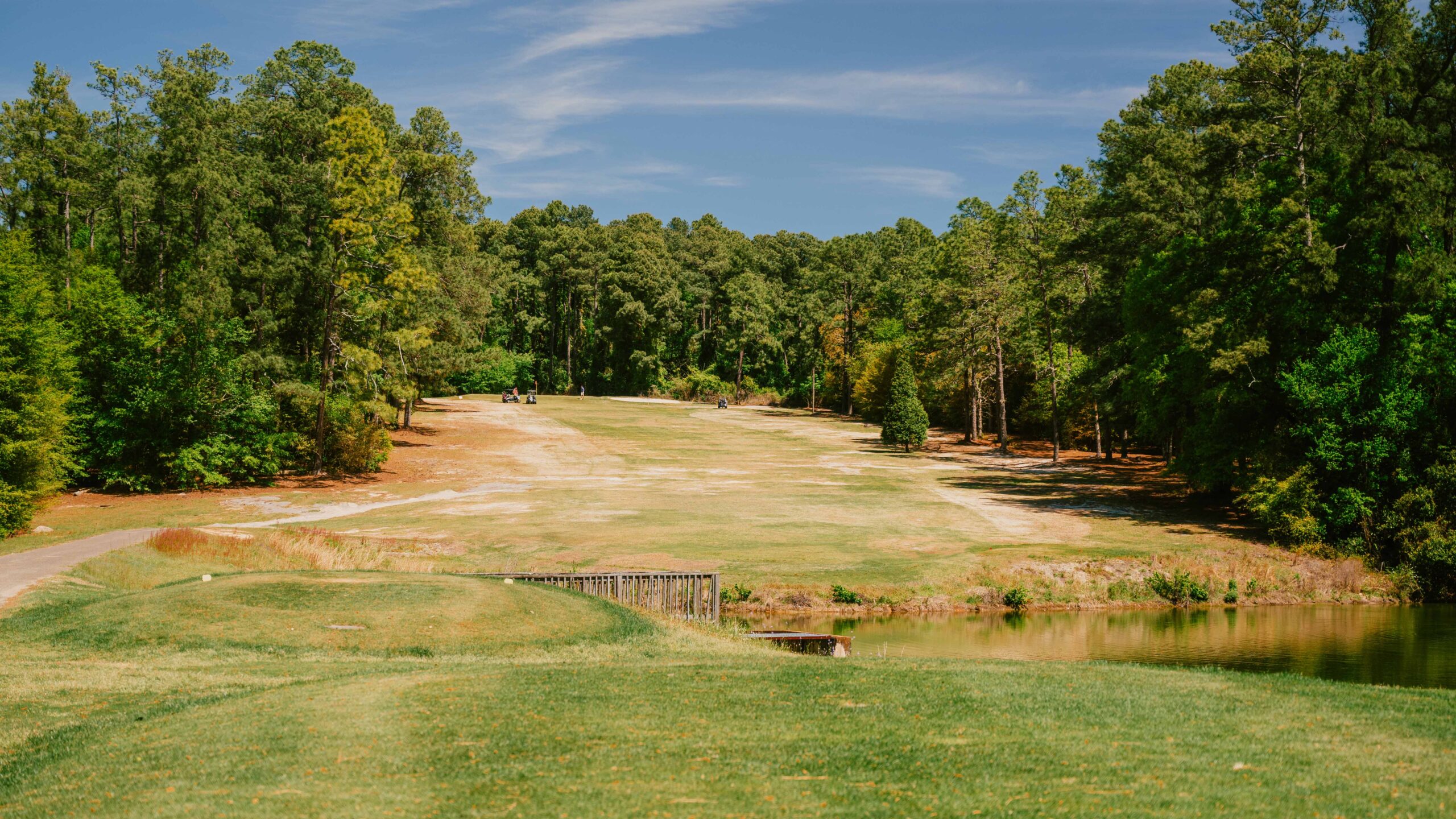
The third fairway crowded by trees
-
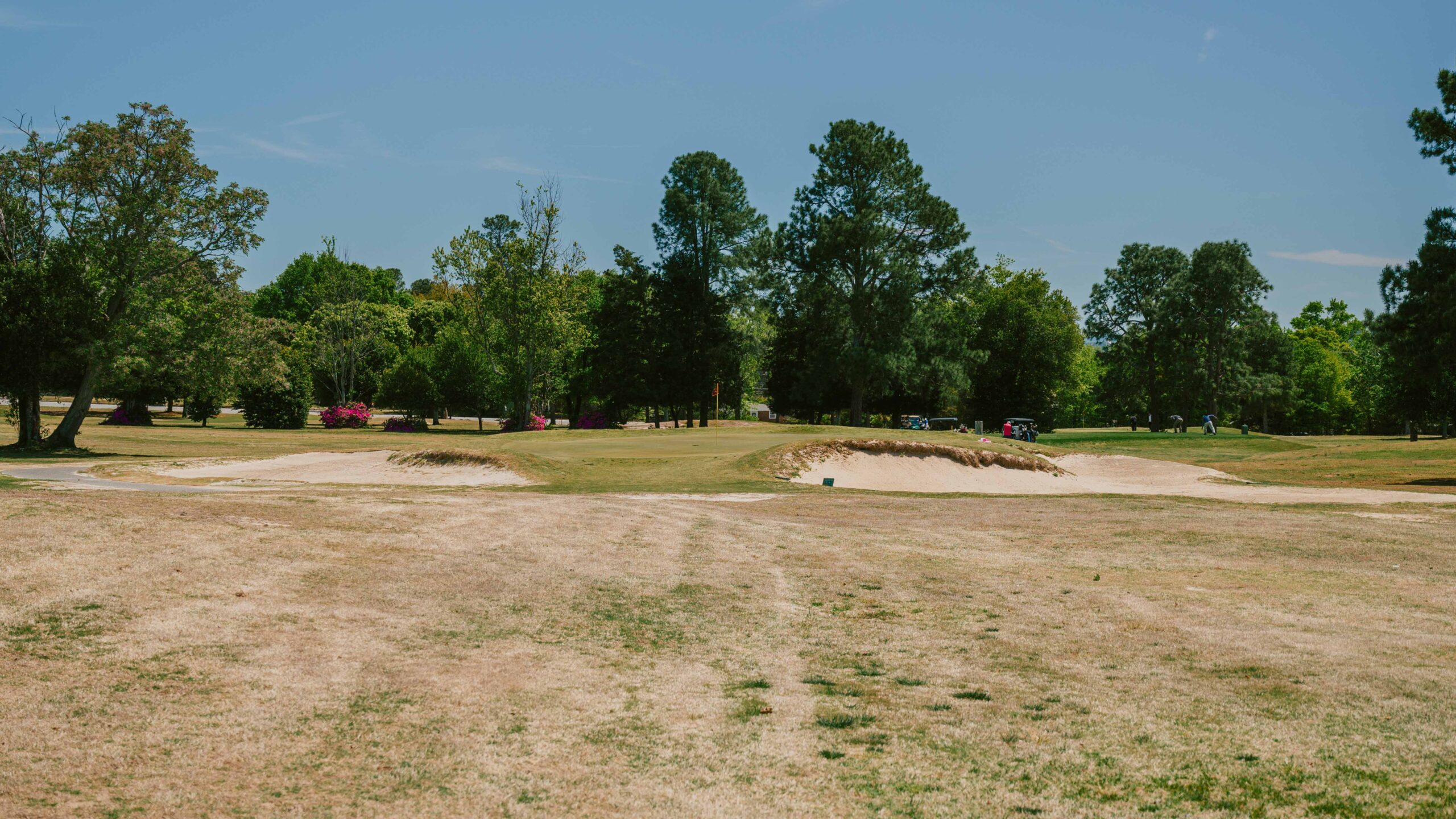
The 10th green's small opening
-
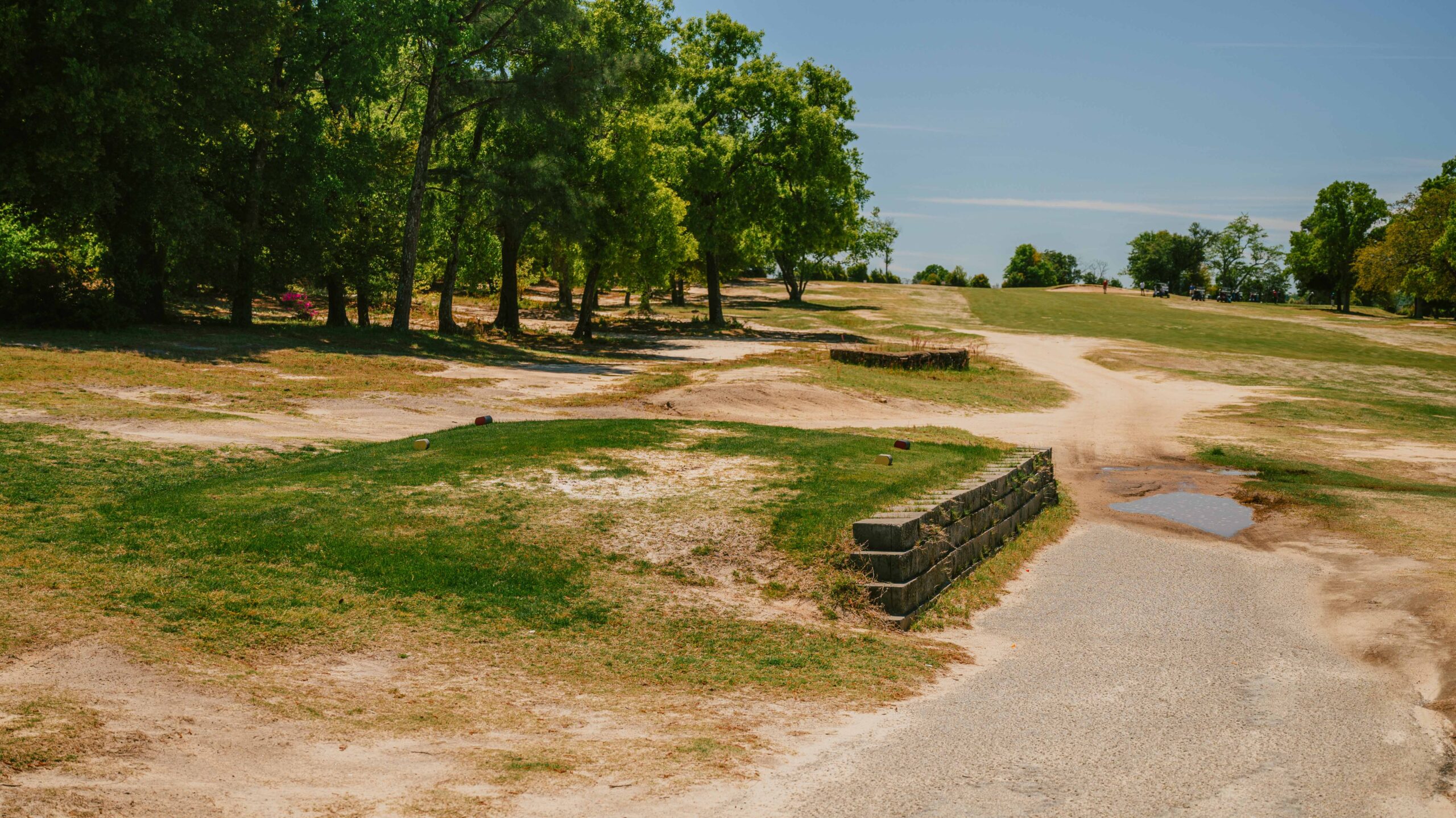
A poorly placed forward tee
-
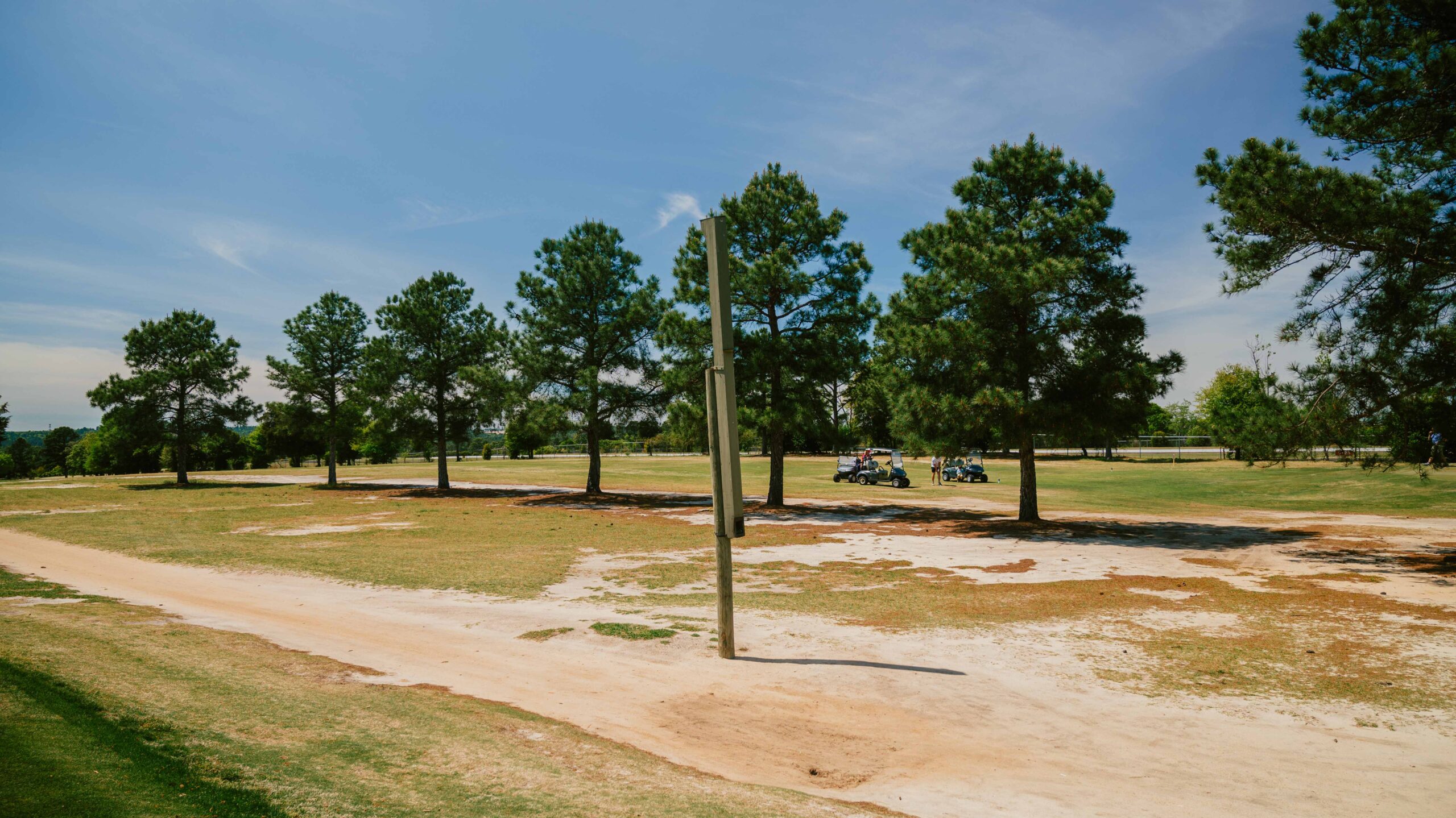
Sandy rough area that can be naturalized and better presented
Many people who call The Patch home will never get the chance to play Augusta National’s much more famous greens or walk its tumbling fairways. I believe if Augusta National is going to undertake this project, they should help bring a similar architectural interest and inclusive design to the muni that locals can cherish just as the world cherishes ANGC. There’s no radical change needed at The Patch. All it would take are some simple, thoughtful design elements like rumpled ground contours and interesting greens. Fun, creative, and inclusive design is enough to hook young golfers, allowing them to develop a lifelong love of the game and the valuable lessons it provides.
For more coverage of the Masters, visit our site hub here.


 by
by 
